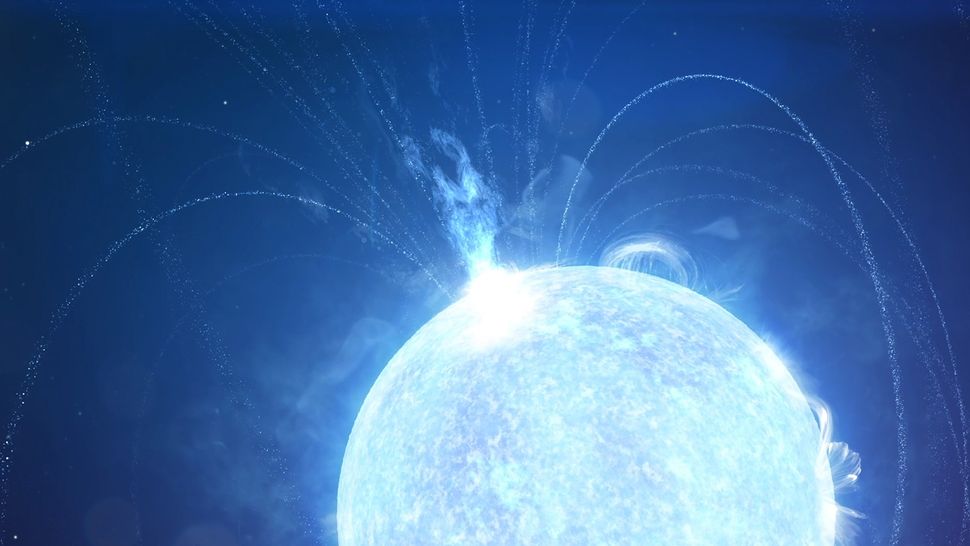'Cosmic monster' star spits energy with the force of a billion suns
By Mindy Weisberger published about 11 hours ago
High energy outbursts in this type of neutron star — a magnetar — are thought to be caused by "starquakes."

A powerful X-ray burst erupts from a magnetar — a supermagnetized version of a stellar remnant known as a neutron star — in this illustration. (Image credit: NASA Goddard Space Flight Center/Chris Smith (USRA))
A dense, magnetic star violently erupted and spat out as much energy as a billion suns — and it happened in a fraction of a second, scientists recently reported.
This type of star, known as a magnetar, is a neutron star with an exceptionally strong magnetic field, and magnetars often flare spectacularly and without warning. But even though magnetars can be thousands of times brighter than our sun, their eruptions are so brief and unpredictable that they're challenging for astrophysicists to find and study.
However, researchers recently managed to catch one of these flares and calculate oscillations in the brightness of a magnetar as it erupted. The scientists found that the distant magnetar released as much energy as our sun produces in 100,000 years, and it did so in just 1/10 of a second, according to a statement translated from Spanish.
A neutron star forms when a massive star collapses at the end of its life. As the star dies in a supernova, protons and electrons in its core are crushed into a compressed solar mass that combines intense gravity with high-speed rotation and powerful magnetic forces, according to NASA. The result, a neutron star, is approximately 1.3 to 2.5 solar masses — one solar mass is the mass of our sun, or about 330,000 Earths — crammed into a sphere measuring just 12 miles (20 kilometers) in diameter.
More:
https://www.livescience.com/magnetar-giant-flare-oscillations-ai?utm_source=notification
